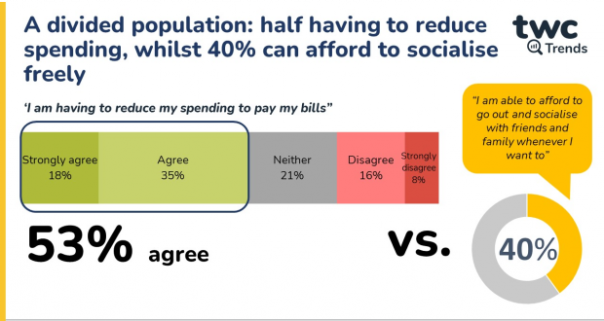
The TWC Trends research was conducted in June 2022 and showed that 53% of consumers agreed that they were having to reduce their spending to pay their bills; with younger consumers and those with children in the household most likely to be feeling the pinch. There continues to be a divided population, with 24% of consumers disagreeing with this statement, particularly consumers aged 55+.
In relation to managing their eating out spending, consumers were using a number of tactics, with 39% opting to eat out less frequently and 26% reducing their spend when they eat out, for example through choosing cheaper establishments, having fewer courses or not drinking alcohol when out of home.
Consumers living in London bucked the national trend with those in the capital more likely to be reducing their spend than reducing their frequency of eating out.
There was also evidence of switching habits, with one in four consumers changing their behaviour by having takeaways rather than meals out; entertaining at home rather than out of home; and/or making food to take to work rather than buying lunch or meals out.
Sarah Coleman, communications director at TWC, said: "Over half of British consumers admit that they are having to reduce their spending to pay their bills and it stands to reason that discretionary spend would be scrutinised first. The younger generation are more likely to visit hospitality outlets, but they are also more likely to agree that they are struggling financially – so this unfortunately means there will continue to be an impact on the channel.
"Given that many consumers are actively looking to reduce their spend when eating out, operators need to consider how they can communicate value and/or offer incentives for repeat visits to capture as many occasions as possible.”